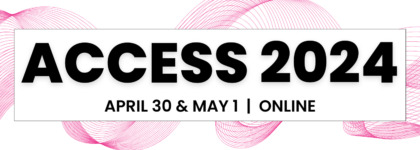The Current State of Captioning: A Report by 3Play Media
[Free Report] Read the 2024 State of Captioning
Every year, 3Play Media conducts research on the current State of Captioning to better understand the industry landscape and forecast future trends. The information in this report offers a valuable understanding of exactly how organizations are making their content accessible.
55% of respondents agree: accessibility will become a core capability of foundational investments for hybrid work environments.
We surveyed 450 respondents across multiple industries, including education, corporate, media & entertainment, and government. The insights from this survey paint a picture about institutional implementation and perception of digital accessibility services, as well as present relevant findings for content marketers, accessibility advocates, and anyone interested in media accessibility trends.
Keep scrolling for some of our most noteworthy report findings from 2024.
Top Trends From This Year
In the 2024 State of Captioning report, we asked respondents about video production and captioning habits, live and automatic captioning solutions, and the primary motivators and barriers involved with making content accessible.
More video is being produced than ever before.
This year’s report revealed an exciting trend in video production – 35% of respondents are producing 500+ hours of video content annually, making this the highest number we’ve seen in State of Captioning history. This further solidifes a long-standing industry trend: video content is vital in content strategy.
Even better? 90% of respondents are captioning at least some of their content. When asked how they prioritize which content gets captioned, 39% say they simply caption everything.
Organizations are standardizing accessibility.
As legislation continually transforms the landscape of digital accessibility, proactive organizations are standardizing their approach to equitable access. In the past, less than half of respondents have reported their organization had a clear approach to captioning or accessibility standards.
In 2024, 66% of organizations have standards for captioning accuracy. According to respondent write-ins, these standards are often derivative of existing recommendations or requirements like the Web Content Accessibility Guidelines or state/federal compliance rules.
Auto captions are enticing, but not accessible.
Automatically generated captions are appealing for organizations just beginning their accessibility journey or working under a tight budget. They’re a great first step – but they’re not effective enough to be a final solution. Despite advancements in automatic speech recognition (ASR) software and other technologies, all of our research continues to underscore the vital role humans play in achieving top-quality transcription and captioning.
The most effective way to leverage auto-generated captions is alongside human revision. In 2024, 47% of respondents said they use auto-captions to generate a foundational transcript before undergoing human review. Despite their popularity, only 14% of respondents believe auto-captions are fully accessible.
Localization services are increasingly in demand.
This year, localization services emerged as more desirable than we’ve ever seen, with 60% of respondents localizing at least some of their content. In an increasingly interconnected world, it’s no surprise that digital media producers want to reach global audiences with relatable localized content.
In the full report, we dive deeper into the nuances of localization – including the difference between services, exploring the current favorite, and factors that influence selection.
Equal access is still the top motivator.
Ultimately, this is the trend we’re happiest to see continuing. Year after year, accessibility is the top-reported motivator behind captioning efforts at most organizations! In 2024, just over 60% of respondents report equal access as their main driver. Other notable motivators included improved educational outcomes (40%) and accommodation requests (38%).
That’s all for our top takeaways. Want to know more?
Read the research and explore contextualized findings in the complete report.
Further Reading

Subscribe to the Blog Digest
Sign up to receive our blog digest and other information on this topic. You can unsubscribe anytime.
By subscribing you agree to our privacy policy.






